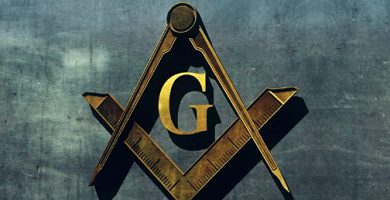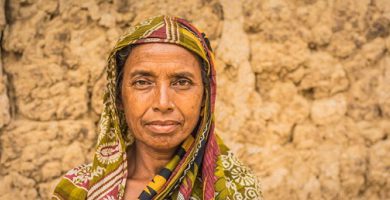Feudal Mode of Production: Definition, Examples (feudalism)
We explain to you what the feudal mode of production is, how it emerged, its social classes, and other characteristics. In addition, the beginning of capitalism.
What is the feudal mode of production?
In Marxist terminology, it is known as the feudal mode of production (or in plain terms: feudalism ), the socio-economic organization that governed medieval society in the West and other regions of the world.
In these societies, political power was decentralized and was exercised independently by the feudal lords: the aristocracy or nobility that conveyed power consanguineously, and which owned the arable land.
According to Karl Marx’s theories, feudalism historically precedes the capitalist mode of production. It consisted of an economic dynamic of submission and exploitation of the peasantry by the aristocracy and the landowners.
However, the landowners were also in a relationship of submission to a higher political power, which was the crown, which allowed the aristocrats political autonomy in their feudal territories, in exchange for loyalty to the military.
Characteristics of the feudal mode of production
The feudal mode of production was essentially a model of agricultural exploitation. It was supported by a peasant mass responsible for the production of goods and governed by a feudal lord: a landowner who imposed their particular order while exercising political and legal power, although the Church (the clergy) also intervened in the latter.
The peasants or servants paid their respective feudal lords a majority portion of what was produced from their work, in exchange for military security, order, and jurisprudence. In addition, they obtained permission to inhabit tiny portions of land where their families settled.
In this relationship of exploitation of the peasantry by the aristocracy, however, there were no slavery laws, although the living conditions of the former could often resemble it. Instead, vassalage relations were established, which politically linked the peasant with the fief he inhabited.
The fiefdoms were the minimum productive unit of the system (hence its name: feudal ). They were territorially divided into:
- Stately or Sunday reservations. Its production was destined to pay tribute to the feudal lord.
- Meek. In them, the peasantry carried out the production of their own goods and thus guaranteed subsistence.
There was no type of currency or unified economic system in this model. On the other hand, cities were underdeveloped compared to the countryside.
Emergence of feudalism
The emergence of the feudal model is explained by the state of disorder and fragmentation of Europe after the fall of the Roman Empire in the fifth century. Such a state of shock and dissolution of the instituted powers allowed the decentralization of political power and the emergence of separate kingdoms.
Each of these kingdoms was divided in turn into fiefdoms led by the nobility: dukes, barons, and other noble titles. However, all of them were morally and legally subject to the Catholic Church, responsible for maintaining social order through the indoctrination of the masses.
In addition, the Church provided spiritual legitimacy to the crown, since the kings, elected between the aristocratic warrior caste and landowner, were considered placed on the throne by God. This era was prodigal in wars, so the peasantry willingly agreed to belong to a fief in exchange for order and protection, even if it were despotic.

The feudal system was practically immovable in terms of social classes, that is, the flow between peasants and noble aristocrats was very unlikely. The former were poor and in charge of agricultural work, and the latter were the owners of the land.
These two social classes differed widely throughout their lives and could cross their destinies rarely, one of them being war, the main obligation of the nobles and secondary of their vassals. A third social class was the clergy. To them, the Catholic Church guaranteed their subsistence but prevented them from accumulating property of any kind.
As a general rule, the status of noble or peasant was maintained throughout life, since the nobility was transmitted by consanguineous route (hence the talk of “blue blood” or “patrician blood”). The limited routes of social ascent were heroism in the war, ascription to the clergy, and marriage with people of ancestry or noble surname.
Towards the end of the feudal model a new social class appeared, the bourgeoisie, composed of free men possessing businesses and capital, although not so of noble titles. As this class grew and established itself as the new ruling class, feudalism approached its end.
End of the feudal mode of production
The feudal model of production in Western Europe came to an end around the 15th century, in the middle of the Bourgeois Revolutions, a period of profound social and political changes that responded to the emergence of a new social class: the bourgeoisie.
Of commoner origin but business owners, ex-officio merchants or capital holders, the bourgeoisie was gradually displacing the aristocracy, whose possession of land ceased to be a guarantee of power, as nations arose and with them the presence of a currency Commonly used in the community.
In this time of change, the Church lost its firm grip on medieval culture as religion was displaced by the cult of reason and thought. New scientific knowledge and new forms of goods production and accumulation were achieved.
These and other innovations were the results of revolutionary agricultural and industrial techniques and the profound cultural change that occurred during the Renaissance. The final end of feudalism came with the abolition of the absolutist monarchy during the eighteenth century. The French Revolution (1789) was an important milestone in that regard.
The emergence of the capitalist system

The accumulation of goods and political influences allowed the bourgeoisie access, commercially, too noble titles initially, but then to lands, and political favors. Thus, it was erected as the new ruling class.
The power of the bourgeoisie did not reside as before in blood, but in the capital, that is, in the amount of money that could be accumulated and exchanged for goods and services. The ruined aristocracy, on the other hand, found itself increasingly isolated in its rural settings.
On the contrary, the revolution was brewing in cities, where urban life became much more important. This would bring a new system: capitalism, in which feudal peasants became workers, and the countryside was displaced by the factory.




